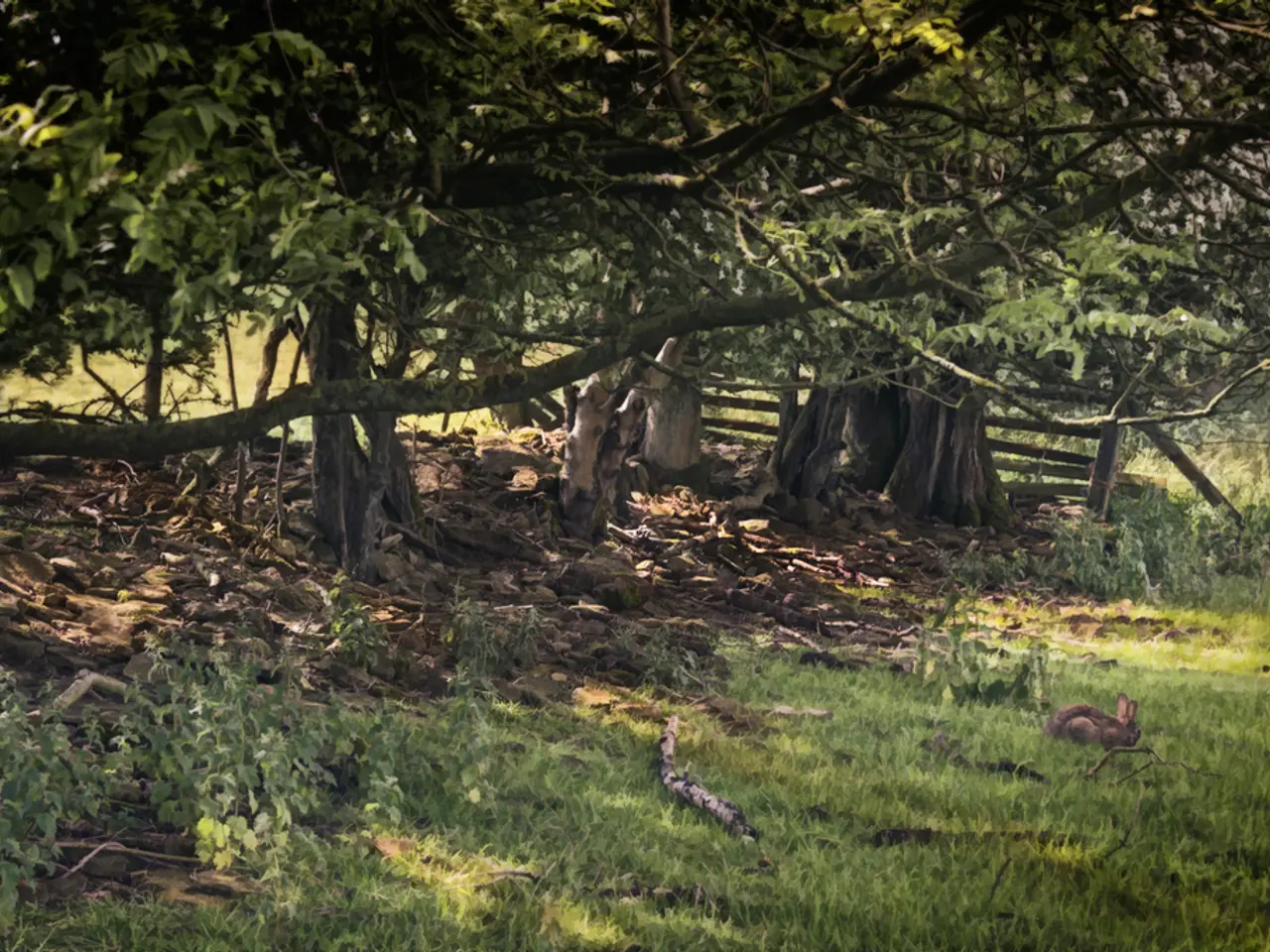Landscaping Around Your Septic Tank: A Guide on How to Do It
In the quest for a beautiful and functional yard, it's essential to consider the delicate balance of your septic system. Here are some smart landscaping ideas to maintain your system's health, boost curb appeal, and support its functionality.
Plant Selection
When choosing plants, opt for shallow-rooted options to avoid damage to underground pipes and components. Suitable choices include sod, wildflower mixes, fescue, bugleweed, and periwinkle. These plants not only enhance visual interest but also protect your system [1][3].
Native and Drought-Tolerant Plants
Native and drought-tolerant plants are a great choice as they require less watering, reducing excess moisture that can harm septic fields. By promoting ecological balance and system longevity, these plants also contribute to a healthier environment [1][3].
Leach Field Care
Avoid soil compaction and heavy structures (like decks, patios, or storage sheds) over leach fields. Protect soil aeration and avoid excessive watering to maintain wastewater treatment efficiency [1][3][5].
Aesthetic Integration
Creatively landscape your yard to hide septic tank lids and utility components while ensuring accessibility. Planting around these features but not obstructing access or interfering with system operation is key [1][4].
Erosion Control Features
Implementing elements such as dry creek beds or rain gardens near—but not on—the septic area can enhance curb appeal, support local wildlife, and prevent soil erosion while safeguarding the septic system [2].
Safe Distances for Trees and Shrubs
Tree roots can grow two to four times wider than the canopy, so those with aggressive root systems should be planted well away from the septic field. Less aggressive trees should be planted 20 feet or further, while shrubs with less aggressive roots may be planted 10 feet or further from the septic field [1][3][5].
Avoiding Potential Hazards
Ponds, vegetable gardens, herb beds, fruit trees, and berry bushes should be located well away from the septic system due to potential contamination and maintenance concerns [1][3]. Woody plants with deep, aggressive root systems should be avoided when landscaping around the septic tank [1][5].
Maintaining the System's Health
The wastewater filtering through a drain field can contain bacteria, residue from household cleaning chemicals, and other harmful substances. By following these landscaping tips, you can create a beautiful yard that promotes septic system health and longevity while enhancing curb appeal.
[1] EPA. (2021). Onsite Wastewater Treatment Systems: Managing Landscaping Around Your System. Retrieved from https://www.epa.gov/nrmrl/on-site-wastewater-treatment-systems-managing-landscaping-around-your-system
[2] USDA NRCS. (2021). Rain Gardens. Retrieved from https://www.nrcs.usda.gov/wps/portal/nrcs/detailfull/nrcs/water/wow/?cid=nrcs142p2_053751
[3] Michigan State University Extension. (2021). Landscaping Around Septic Systems. Retrieved from https://www.canr.msu.edu/news/landscaping_around_septic_systems
[4] University of Wisconsin-Madison. (2021). Landscaping Around Your Septic System. Retrieved from https://www.extension.wisc.edu/septic-systems/landscaping/
[5] University of Minnesota Extension. (2021). Landscaping Around Your Septic System. Retrieved from https://www.extension.umn.edu/gardening/yard-garden/landscaping-around-your-septic-system/
- To increase the charm of your garden and support the functionality of your septic system, select plants with shallow roots such as sod, wildflower mixes, fescue, bugleweed, and periwinkle.
- Native and drought-tolerant plants like these not onlyboost curb appeal but also protect the septic system by requiring less watering.
- Maintain the health of your septic system by avoiding soil compaction and heavy structures, ensuring aeration and preventing excess watering.
- In order to blend your landscaping decor with practicality, creatively arrange your yard to conceal septic tank lids and utility components without obstructing access.
- By adding erosion control features such as dry creek beds or rain gardens near your septic area, you can enhance your home-and-garden lifestyle while safeguarding the system.
- To prevent contamination and maintenance issues, keep vegetable gardens, herb beds, fruit trees, and berry bushes at a safe distance from the septic system.
- When landscaping around the septic tank, avoid planting trees and shrubs with aggressive root systems, to ensure the long-term health and efficiency of the system.






